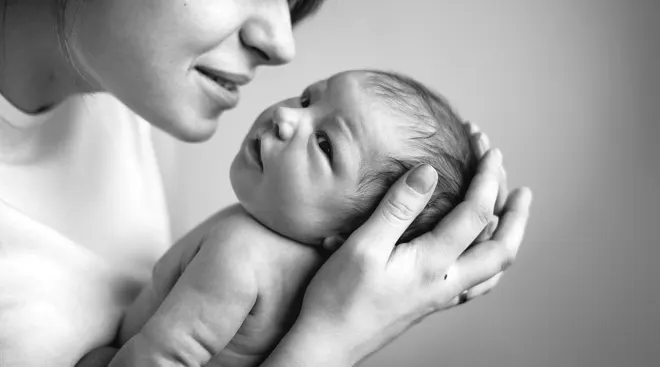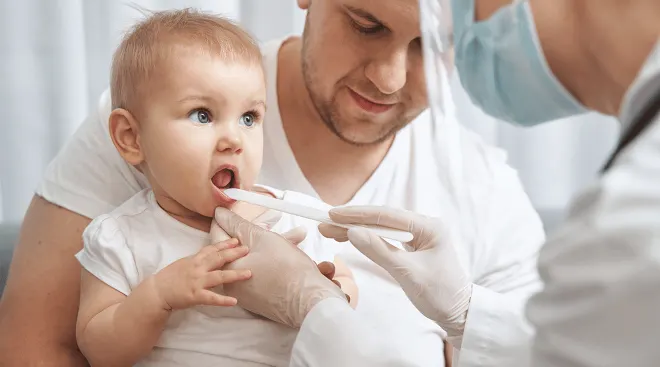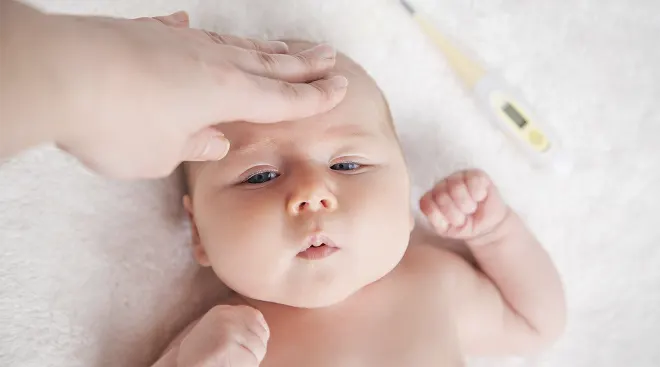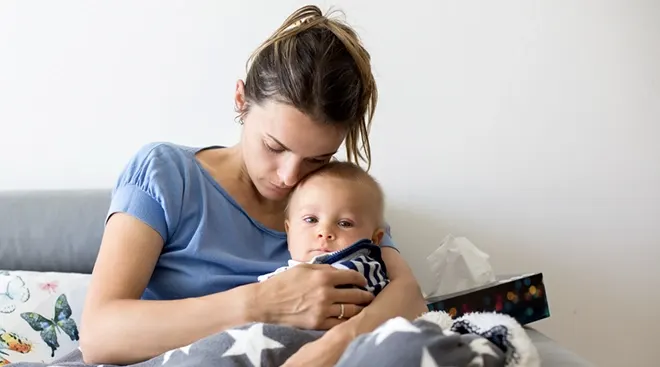Are Baby’s Eyes Red? Here’s Why—And What to Do About It
You spend hours gazing into your little one’s eyes, but it can be jarring when you suddenly notice baby’s eyes are red or even bloodshot. Before you panic, know this: Red eyes are common in infants, and for a wide range of reasons.
“Bloodshot or very red eyes are incredibly common in infancy and childhood,” says Ansley Schulte, MD, pediatric medical director at KidsPeace. “Most assume this means a bacterial pink eye infection, but there are many other causes.”
Of course, that doesn’t mean you should simply brush it off. Here’s what’s behind bloodshot eyes in infants, plus when to reach out to baby’s pediatrician.
There are a lot of potential factors that could be causing eye redness in baby. Keep these possibilities in mind as you try to find a culprit.
Popped blood vessel
It sounds disturbing, but it’s relatively harmless. “Usually the earliest experience with bloodshot eyes is a subconjunctival hemorrhage, a ‘popped blood vessel’ between the thin outer layers of the eye,” Schulte says. “These are incredibly common in the neonatal period due to pressure and forces baby experiences while exiting the womb.” Rest assured, these aren’t painful and don’t cause any vision issues. “They look very dramatic and scary, but are harmless and improve on their own in several weeks as the body reabsorbs the blood,” Schulte says.
Viral infection
A range of viruses can lead to conjunctivitis—also known as pink eye. “All causes of conjunctivitis can lead to increased redness, tearing or discharge from the eyes, itching and pain,” Schulte says. But pink eye caused by a virus usually affects both eyes and involves clear discharge. It also comes with other signs of a viral illness like fever, cough, congestion and runny nose, she says.
Tear duct obstruction
Your little one’s tear duct, which is a small tube that drains tears from the eyes, can become blocked, leading to discharge, says Gina Posner, MD, a pediatrician at MemorialCare Medical Group in Fountain Valley, California. However, you can usually turn this around quickly. “Typically, just massaging the area between the nose and the eye with clean hands can help,” she says.
Bacterial infection
Pink eye can also be caused by bacteria. “Bacterial pink eye is typically only on one side, though the infection can spread to the other eye,” Schulte says. It also usually comes along with pus and eye crusting, she says. This can be a serious for a newborn or young infant, so you’ll want to get medical help immediately.
Irritant exposure
A range of things can irritate your little one’s eyes, including detergent on your clothes, Posner says. This may cause one eye or both eyes to be red and itchy. Babies who have red eyes due to exposure to irritants usually don’t have other symptoms—just the red eyes, Schulte says.
If baby’s eyes are red but it doesn’t seem to be causing any pain or major discomfort, it’s fine to simply monitor the situation for a few days. “But if it’s not resolving within a couple of days, if it’s bad or if it’s accompanied by swelling, go see the doctor right away,” Posner says.
“If the redness is only present on one side rather than both eyes, this is more concerning for an infection or injury that may require treatment,” Schulte adds. “If redness is associated with changes in vision, severe pain or yellow or green pus coming from the eyes, contact your pediatrician.” Additionally, if baby has a fever, isn’t moving their eye in all directions or has swollen eyelids that are red and tender to the touch, you should reach out to your pediatrician.
Again, you don’t want to sit on eye redness for too long—especially with a younger infant. But, if you don’t think it’s infected, you can try these options to help ease the redness:
Use a cool compress
“Cool compresses are a great way to improve swelling, lessen itching and pain, and soften and remove any crusted eye discharge,” Schulte says.
Check your detergent
“I recommend, in general, using an odor-free, dye-free detergent because babies tend to be sensitive to those kinds of things,” Posner says. That means using it on your clothes, too, since you’ll likely be holding baby against your shirt.
If you see your child’s pediatrician, they may recommend one of a few different treatments:
Antihistamine eye drops
This may be recommended if your doctor thinks baby is having red eyes due to allergies.
Antibiotic ointments or drops
If baby has a bacterial infection, your doctor will likely suggest this treatment. They may also suggest this if baby has a scratch to lower the risk of infection, Schulte says. But if your child’s doctor determines that their red eyes are due to a virus, they’ll usually just recommend that you keep an eye on things.
Please note: The Bump and the materials and information it contains are not intended to, and do not constitute, medical or other health advice or diagnosis and should not be used as such. You should always consult with a qualified physician or health professional about your specific circumstances.
Plus, more from The Bump:
Gina Posner, MD, is a pediatrician at MemorialCare Medical Group in Fountain Valley, California. She received her medical degree from New York Medical College.
Ansley Schulte, MD, serves as pediatric medical director at KidsPeace. She earned her medical degree from the University of Florida College of Medicine.
Learn how we ensure the accuracy of our content through our editorial and medical review process.
Navigate forward to interact with the calendar and select a date. Press the question mark key to get the keyboard shortcuts for changing dates.




















































